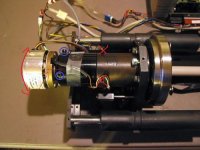monkeyfist
Established
No, unfortunately not! It seems that QC applies some sort of softening to all settings besides Raw.
I'll try to update my machine as advised by Monkeyfist and see if that sorts out the 16bit raw - stay tuned!
Update: Failed to update with the file provided by Monkeyfist.
Maybe the chaps over at ABC-scan can shed some light on the issue as well? Anyone tried to write them yet? Are they still located in Denmark?
The ABC scan people are not really keen to answer questions. Have tried it couple of times. But then again, its a repair business.. not a helpdesk.
Shame the file did not work, maybe it got corrupted on its way or something. At least the firmware file from that same batch worked fine on SM5000.



